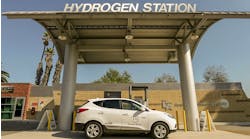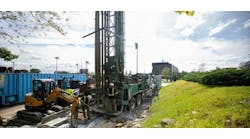As educators and parents examine factors that affect learning in a K-12 setting, the focus naturally turns to issues such as like classroom resources, instructor skills, curriculum, budget, attendance habits and support from home. Just as important is the impact of the physical environment on student learning. Is the classroom well ventilated for good indoor air quality (IAQ)? Is it comfortable—not too warm or too cold? Is it easy for students to hear the teacher and focus on their work? And does the classroom create a safe and secure environment for students?
A variety of heating, ventilation and air-conditioning (HVAC) technologies address these concerns—everything from dedicated outside air systems (DOAS) to rooftop units (RTU), water source heat pumps (WSHP) and unit ventilators. When they employ smart control and automation capabilities, these technologies also contribute to improved efficiency and ease of maintenance. This helps schools save money through reduced energy consumption, lower utility bills and more efficient troubleshooting.
Linking student performance to indoor air quality
According to a report by McGraw-Hill Construction about the influence of green schools on occupants, indoor air quality can significantly influence the health of students and staff. High levels of air pollutants such as dust, vapors, toxins, irritants and allergens from mold can lead to respiratory illnesses and asthma, which can contribute to student absenteeism and reduced performance in the classroom.
To create healthful indoor air, schools should consider many factors: the rate and effectiveness of ventilation, filter efficiency, temperature, humidity, maintenance, and cleaning.
Humidity and ventilation have some of the greatest impact on school occupants. For example, researchers in Finland saw 15 percent fewer common colds in schools that had no excess moisture or mold. Additionally, researchers at Lawrence Berkeley National Laboratories found that student performance is reduced by 5 to 10 percent when ventilation rates drop below minimum standards.
One solution, unit ventilators, uses a traditional method of ventilating, heating and cooling individual classrooms with clean, healthful, conditioned air. Often used in retrofit applications to reduce installation expense, the units require little ductwork and can handle large amounts of outside air—up to 80 percent. They deliver the outside air to the classroom and mix it with inside air while heating or cooling to provide a long-term, energy-efficient operation.
DOAS helps meet air quality standards
When additional outside air is required, to meet ASHRAE Standard 62.1-2001, for example, recirculating air-conditioning units can be used in conjunction with an outside dedicated air system. DOAS units can introduce up to 100 percent clean, dehumidified outside air into a classroom in all weather and climate conditions. A DOAS will help meet requirements for fresh air and energy efficiency and help combat indoor air pollution.
Most DOAS can pair seamlessly with other HVAC systems, including rooftop units and water source heat pumps, to remove ventilation latent load and maintain indoor air quality. In fact, about 95 percent of water source heat pumps are paired with a DOAS to improve ventilation.
In addition to addressing IAQ concerns, a DOAS can control humidity by helping to prevent the growth of mold and bacteria (which can cause respiratory and allergic reactions and odors) and contributing to a more comfortable environment.
Temperature control is also a major factor in school comfort. Available in small to large sizes, unit ventilators and WSHPs enable schools to install one unit per classroom or functional space in K-12 facilities. A dedicated unit with a single thermostat makes targeted comfort control a reality in that space. Although individual rooftop units also can be installed in classrooms, these units frequently provide heating and cooling to multiple spaces in a K-12 facility. Hot gas reheat technology helps these units maintain a comfortable environment, in terms of both temperature and humidity levels, by tempering and dehumidifying the air and enabling the RTU to run longer without overcooling the space.
HVAC technologies for sound reduction
In addition to comfort and good IAQ, the McGraw-Hill Construction report points to the important role acoustics play in learning. According to the report, excessive background noise can impede students’ ability to pay attention, which makes WSHPs a good choice for classroom settings. These simple-to-maintain units, available in a variety of sizes for installation above the ceiling, below windows and in mechanical closets, offer a number of sound-minimizing features. These include a sound blanket around the compressor and special isolation material that absorbs vibrations, and electronically commutated motors on fans designed with sound attenuation in mind. Additionally, refrigeration and air movement components are isolated from building structural components to prevent vibration and noise transmission.
Rooftop units also offer sound-reducing features, as well as a way to remove the sound source farther away from occupants. In fact, every HVAC technology that can be used in a classroom is designed with sound attenuation in mind. In most cases, the way these units are installed will determine how loudly or quietly they operate. This makes it important to consider acoustics during the planning and design stages of school construction and renovation.
Contributing to safe, healthy environments
These units also can contribute to a safe, healthful school. In addition to delivering clean, fresh air, some offer carbon dioxide monitoring. Others, such as water source heat pumps, use noncorrosive drain pans to stop rust from forming and are constructed with foil-faced insulation, which can be easily wiped clean. Also, the fact that water source heat pumps are indoors eliminates the threat of vandalism while limiting equipment wear.
Smart controls optimize equipment performance
In addition to the positive effect HVAC technologies can have upon classroom learning, facility managers and school administrators will appreciate the benefits delivered by smart controls and the automation capabilities associated with these technologies. Modern buildings, including schools, are relying more on building-wide automation systems to maintain proper facility control. Smart equipment controllers, for example, provide robust and reliable unit operation along with easy-to-use information, ease of setup and troubleshooting capabilities.
Some systems have smart controls that can communicate wirelessly with mobile devices and issue real-time reports. They provide staff with performance alerts by using sensors that monitor temperature, pressure and humidity, in addition to fault detection and diagnostics. The result is increased productivity, energy-efficient operation, reduced utility bills, fewer equipment failures and extended equipment life.
By selecting the appropriate HVAC equipment that meets a school’s needs, administrators and maintenance personnel can create healthful, positive learning environments where students and teachers can thrive and the budget stays in line.


